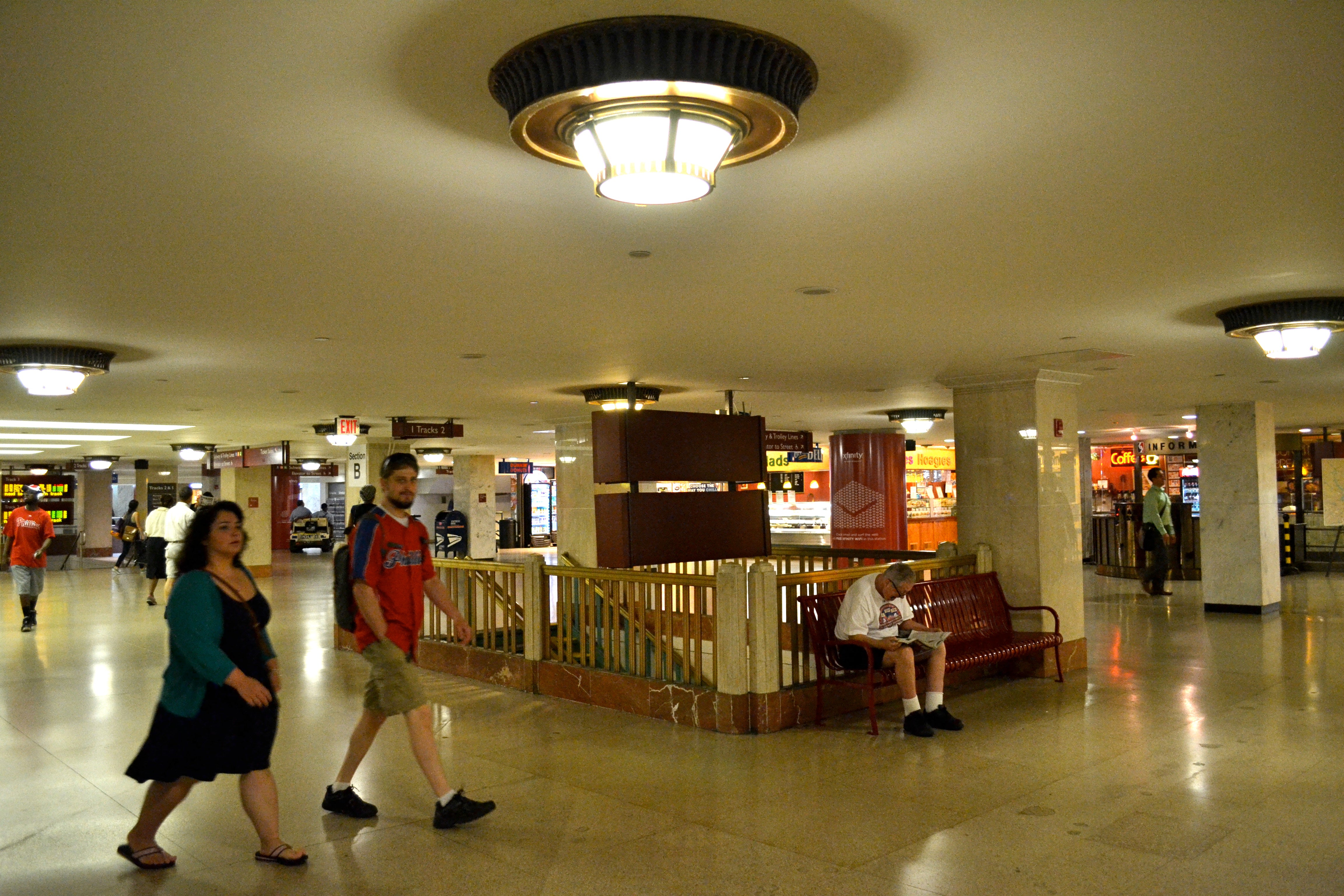Council to vote on Comcast Tower’s transit concourse extension [Updated]


Update: The bills described below were adopted unanimously by City Council on Thursday, March 27, 2014.
City Council will vote Thursday on legislation that could allow Comcast Corporation and Liberty Property Trust to extend the underground transit concourse from its current terminus, westward beneath 18th Street to the proposed Comcast Innovation and Technology Center at 1800 Arch Street.
If approved, the pedestrian tunnel will allow the 3,000 to 4,000 employees the building is expected to house to enter the building from transit connections, including regional rail trains, trolleys, Broad Street and Market Frankford subway lines, without leaving the below-ground transit concourses centered around Suburban Station. It will also extend public access to the Suburban Station concourse.
“I think the transit concourse is extremely important,” said Deputy Mayor for Economic Development and Philadelphia City Planning Commission Chairman Alan Greenberger. “It’s very clear to us that development sort of north of JFK and heading west has been completely related to the availability of the concourse and therefore the ability of people coming in, particularly on the regional rail system, to move from the trains inside, into their buildings.”
The pedestrian tunnel will cross beneath 18th Street, and travel on a diagonal from a point just below the southwest corner of Arch Street Presbyterian Church to a Comcast Innovation and Technology Center access point just north of Cuthbert Street.
Design work for the tunnel has not been released, but the legislation before Council would permit a tunnel that is roughly 18-feet wide and 11-feet high, as well as an underground utility vault.
“I don’t think anybody knows what it looks like,” Greenberger said. “They have a sense of the dimensions only because there is a narrow passageway they can thread under 18th Street.”
With these space constraints, it is unlikely that the tunnel will have room for shops.
“The [extension] is simply a passageway that goes from the end of the concourse at the original Comcast [property] to the public space on the other side,” Greenberger said.
Community stakeholders
The state and city have already committed a combined $40 million toward construction of the pedestrian tunnel. The city will retain ownership of the tunnel, which lies in the current bed of the street. Comcast and Liberty Property Trust will build the structure, and Comcast will be responsible for maintenance.
The project partners have opened dialogue about the entire project, including the transit concourse extension, with neighborhood stakeholders including the residential properties Kennedy House and The Sterling Apartments, Arch Street Presbyterian Church and the Logan Square Neighborhood Association (LSNA).
At a City Council Committee on Streets and Services hearing, Arch Street Presbyterian Church Reverend Bill Golderer said, “While the diagram attached to the bill suggests that the tunnel [will not] touch the corner of the property, we have not had an opportunity to view more detailed engineering plans and are very aware that the building, which is almost 160-years-old, is likely susceptible to damage as the result of vibrations and related aspects of 21st Century construction techniques.”
The church, which was built in 1855 and added to the National Register of Historic Places in 1971, will stand directly between the existing Comcast Center and the proposed Comcast Innovation and Technology Center.
When asked if constructing this pedestrian tunnel will present any significant challenges, especially considering the close proximity of the tunnel to the church, Greenberger said, “These are tried and true construction techniques. There’s nothing magical about it.”
LSNA President David Searles declined to comment on the impact of the concourse since the civic group has not reviewed the Comcast plans in any detail. LSNA is working with Comcast and Liberty Property Trust to arrange a presentation and review of the project in the near future.
American Commerce Center legacy, high-density
In 2008 another skyscraper, the American Commerce Center (ACC), was proposed for the same 18th and Arch streets location. Like the Comcast Innovation and Technology Center, the ACC project sought to extend the underground transit concourse across 18th Street. Plans for the ACC project progressed but then languished for years as the developers sought, fruitlessly, an anchor tenant. In August 2011, the developer gave up on the ACC vision and sold the property to Liberty Property Trust.
“What the American Commerce Center project did, and I think they were also continuing the concourse, was to really lay the groundwork for the community at large to believe in the site as a high density site,” Greenberger said.
Now, as then, the proximity of transit connections help to make the case for the site’s high density potential.
“The [current] project itself might have happened anyway, but there is no question that the developers felt the presence of the concourse was an absolutely vital thing to the success of the project,” Greenberger said. “… I’m not going to tell you that the concourse is the only thing that made the project happen because it’s not, but it is a very critical agent and enabling factor.”
WHYY is your source for fact-based, in-depth journalism and information. As a nonprofit organization, we rely on financial support from readers like you. Please give today.








